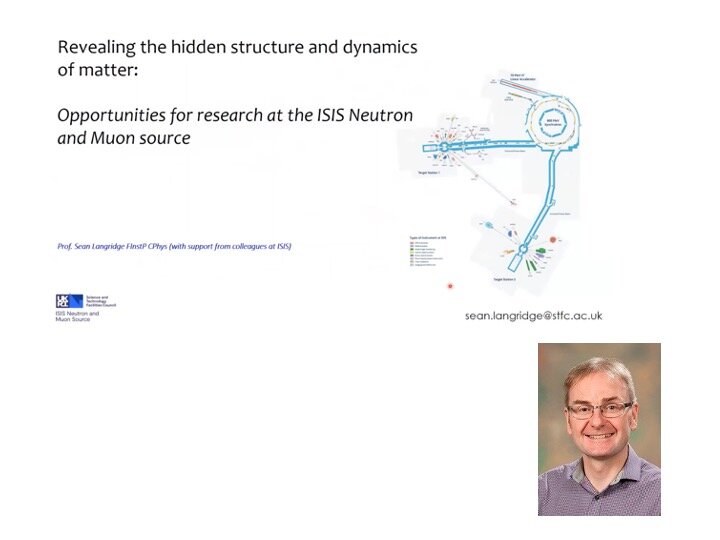VIDEO - Science at Large Scale Research Facilities - Revealing the hidden structure and dynamics of matter: opportunities for research at the ISIS Neutron and Muon source, with Sean Langridge


VIDEO - Science at Large Scale Research Facilities - Revealing the hidden structure and dynamics of matter: opportunities for research at the ISIS Neutron and Muon source, with Sean Langridge
The ISIS facility is a large multi-disciplinary research facility which provide state of the art capabilities to explore matter using spallation neutron and muon techniques. Neutron scattering is capable of accessing a large range of length and energy scales which are ideally matched to contemporary problems in advanced materials, soft matter and the bio-sciences1. The lengthscales accessible range from the inter-atomic, through atomic ordering up to the meso and macro-scale. Furthermore, the energy scales accessible match those of the dynamics and excitations in matter. Neutron scattering thereby provides an absolute, quantitative four dimensional understanding of matter.
Speaker: Sean Langridge, ISIS Neutron and Muon Source, UK.
This webinar is part of LINXS webinar series: Science at Large Scale Research Facilities, introducing the latest scientific breakthroughs and developments at large scale research facilities from all over the world.
Abstract
The ISIS facility is a large multi-disciplinary research facility which provide state of the art capabilities to explore matter using spallation neutron and muon techniques. Neutron scattering is capable of accessing a large range of length and energy scales which are ideally matched to contemporary problems in advanced materials, soft matter and the bio-sciences1. The lengthscales accessible range from the inter-atomic, through atomic ordering up to the meso and macro-scale. Furthermore, the energy scales accessible match those of the dynamics and excitations in matter. Neutron scattering thereby provides an absolute, quantitative four dimensional understanding of matter.
Muon spectroscopy is an extremely powerful technique that provides unique information on the structure of matter through the interaction between the muon’s spin and the local atomic and molecular environment. The implanted muon is highly sensitive to its environment and therefore has wide ranging applications in areas such as unconventional superconductivity, battery materials and hydrogen storage.
In this talk, we introduce neutron and muon techniques which between them allow imaging in both real and reciprocal space and develop their application to a range of problems in physics, chemistry, materials science, engineering, and the life sciences. These applications cover the spectrum from basic to applied research. We also describe how to access these facilities and to apply them to your research challenges.
Biography
Prof. Langridge is head of the ISIS diffraction and Materials Division. This division comprises over 60 PhD-level staff members across the research domains of crystallography, engineering, disordered materials, small-angle scattering, reflectivity, and neutronics.
Sean Langridge has extensive experience of solid state magnetism and in particular the application of neutron and x-ray scattering techniques to nanomagnetism and superconductivity. SL has published over 240 peer reviewed papers with over 4000 citations. Prof Langridge’s research interests in electronic phenomena range across the periodic table including complex oxides, dilute magnetic semiconductors, d0 ferromagnetism, half metals, organics, multiferroics and actinide magnetism.
Sean Langridge is chair of the Project board for the Swedish SuperAdam beamline at the ILL, he is a member of the programme management committee for the ESRF XMAS beamline, and is a member of the instrument advisory board for the Spallation Neutron Source (SNS, Oak Ridge). SL is the project sponsor for the UK’s contribution to the instrument suite at the European Spallation Source, Lund, Sweden.
Prof. Langridge was elected Fellow of the Institute of Physics in 2005 and is a visiting professor at the University of Leeds.
